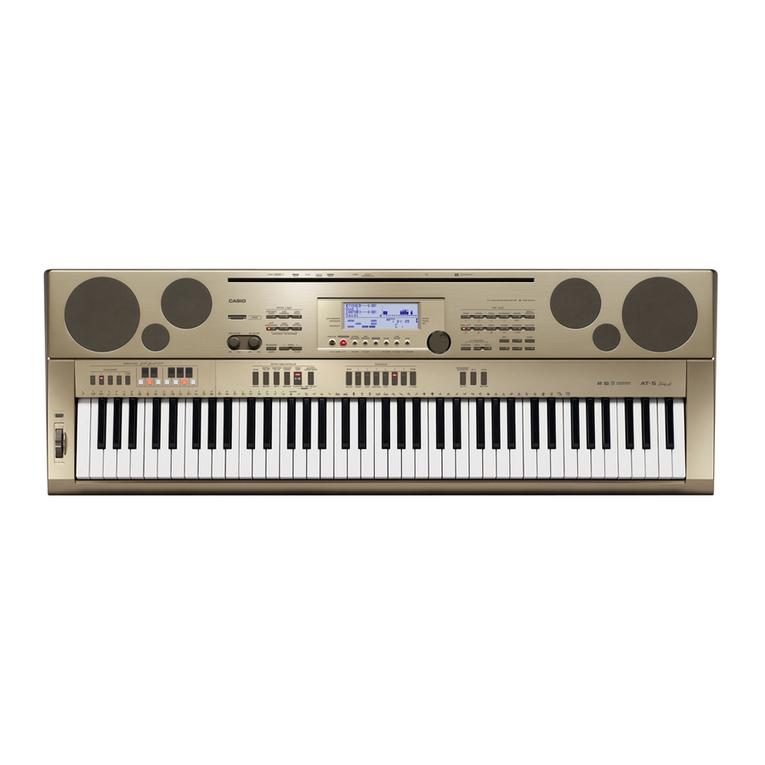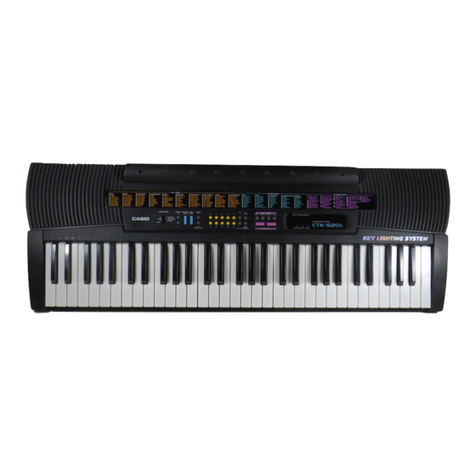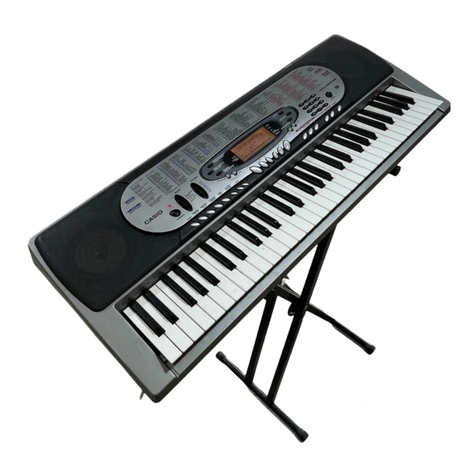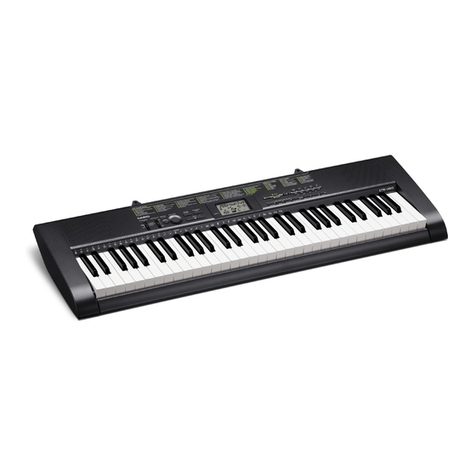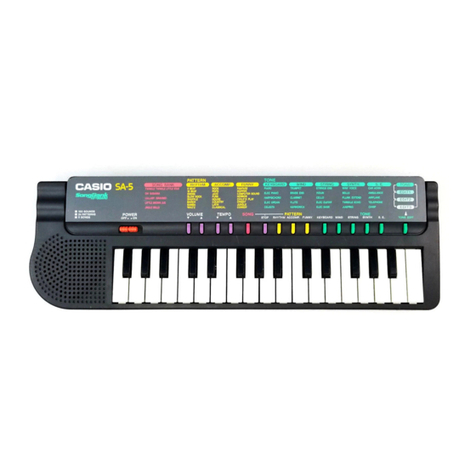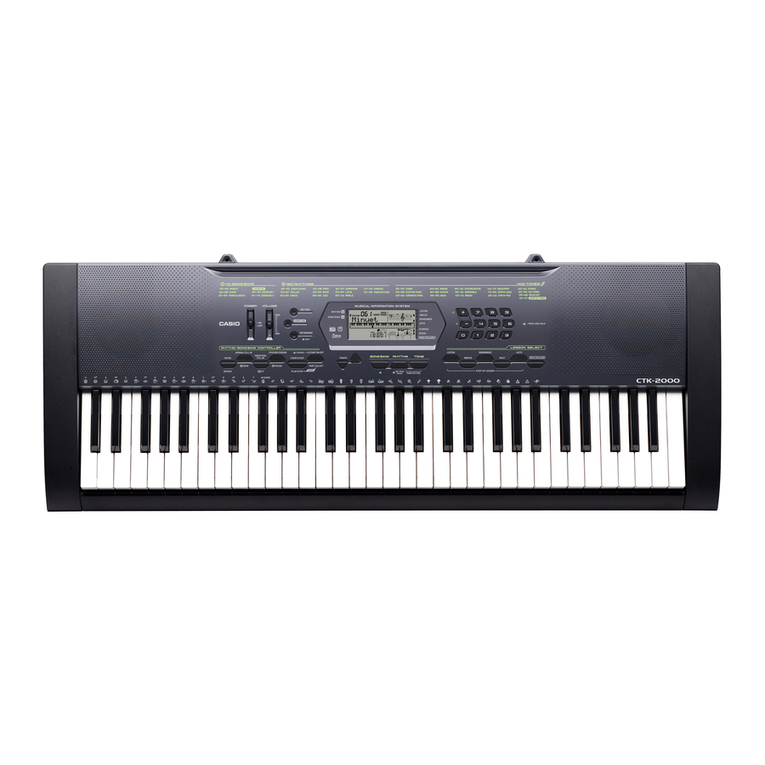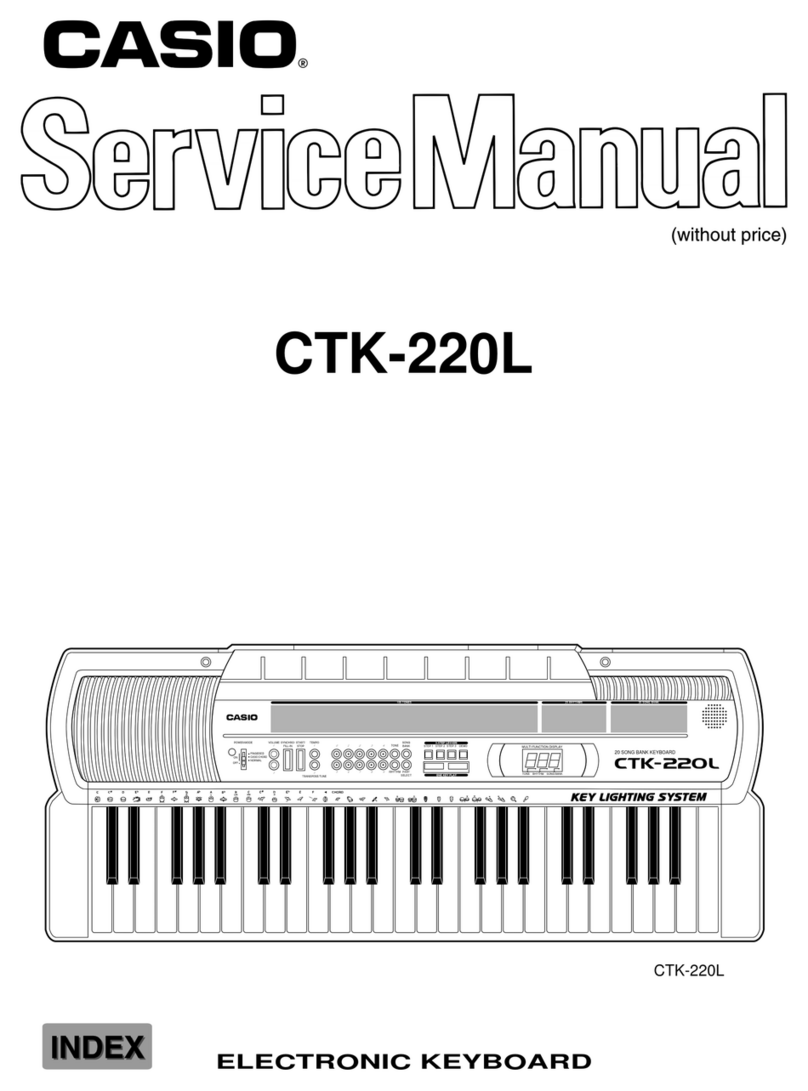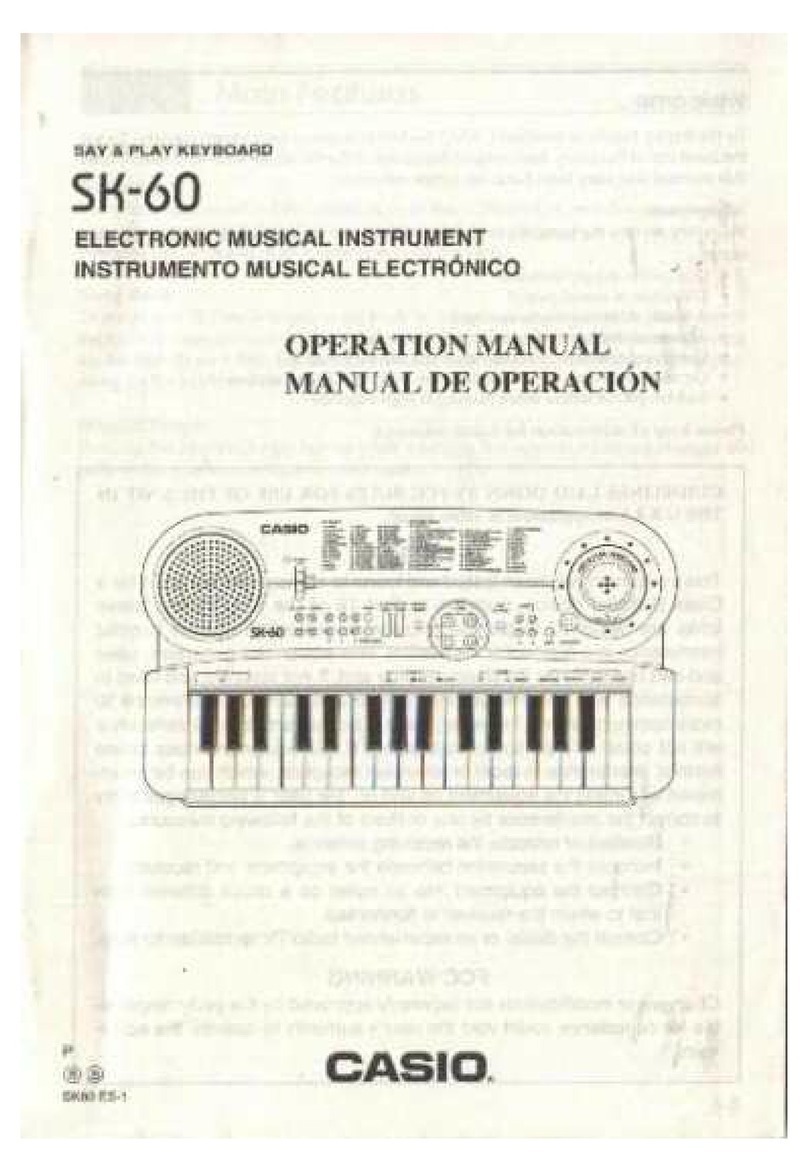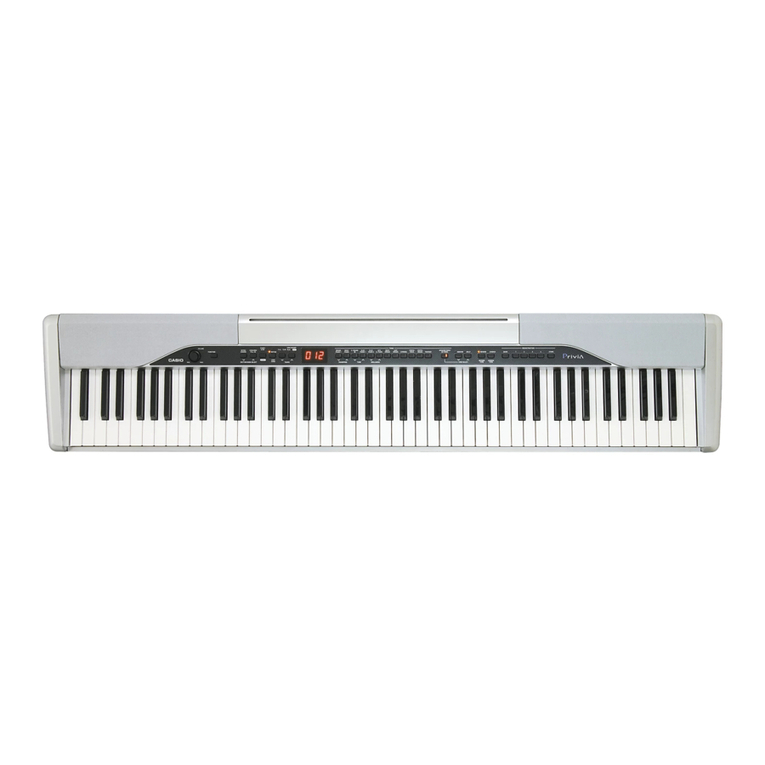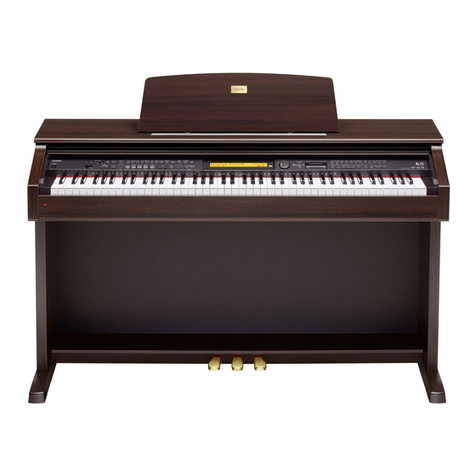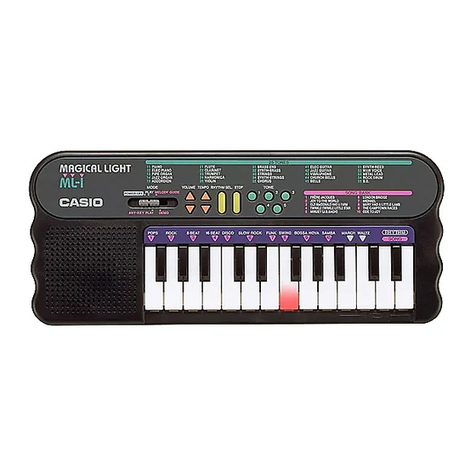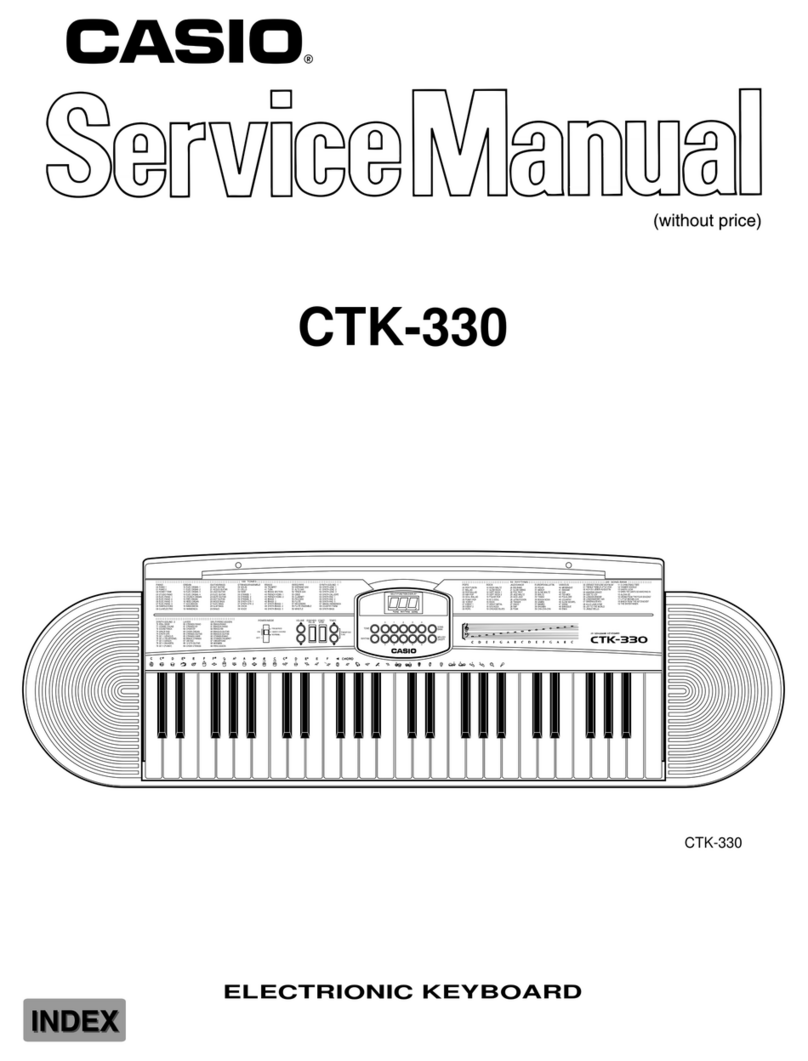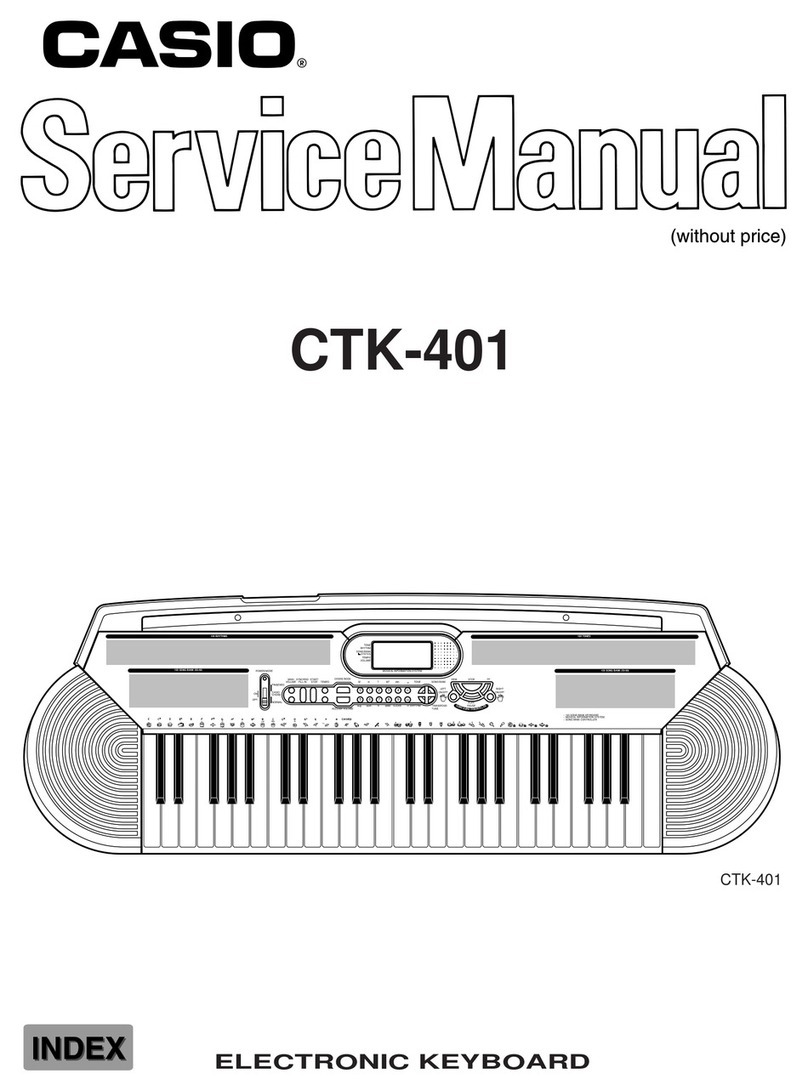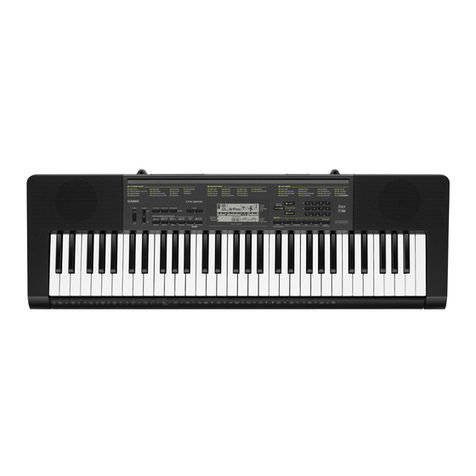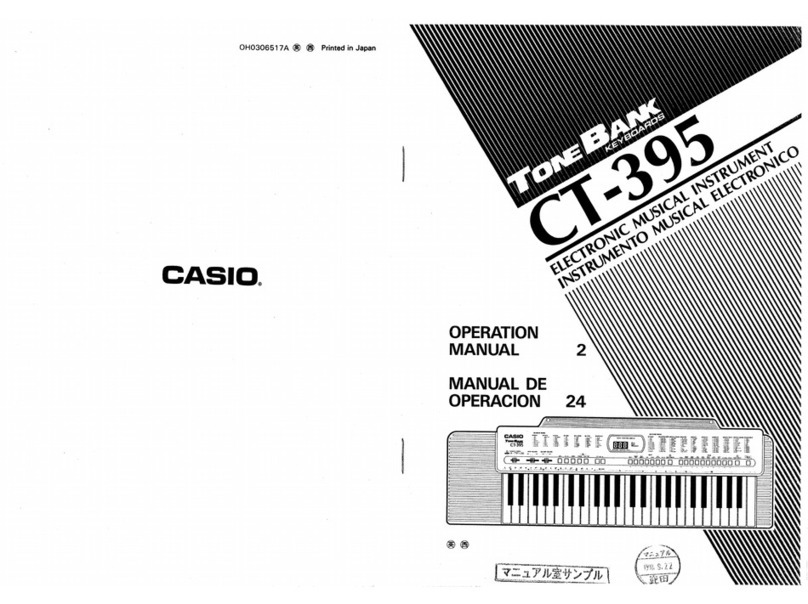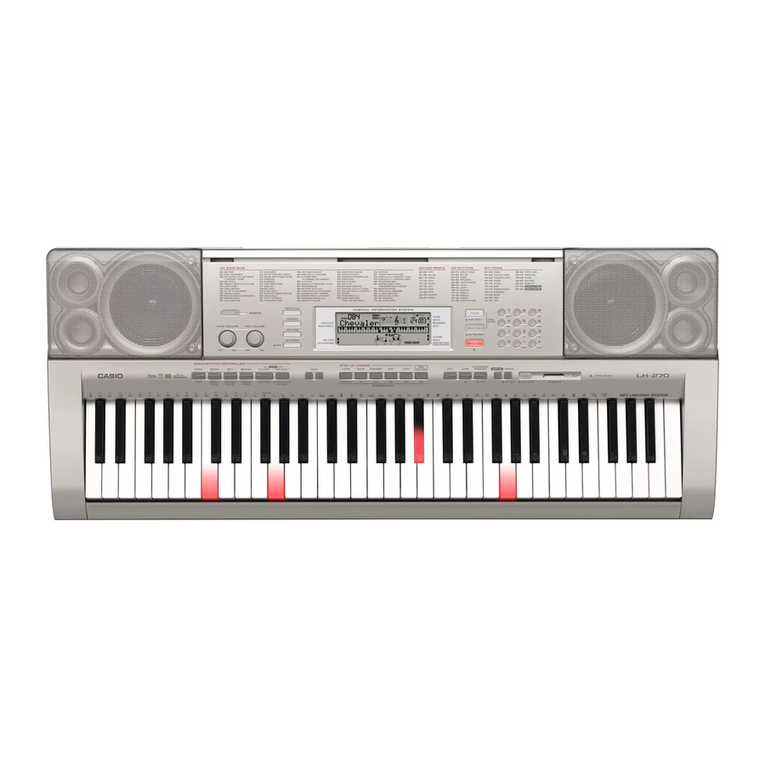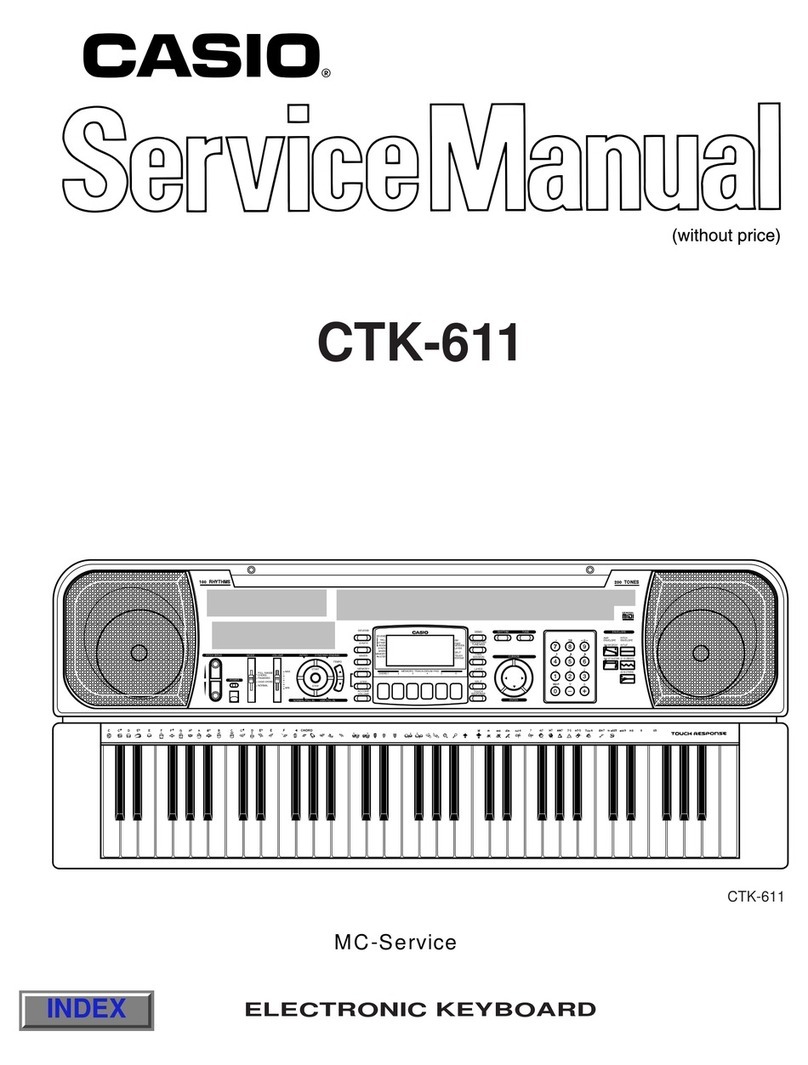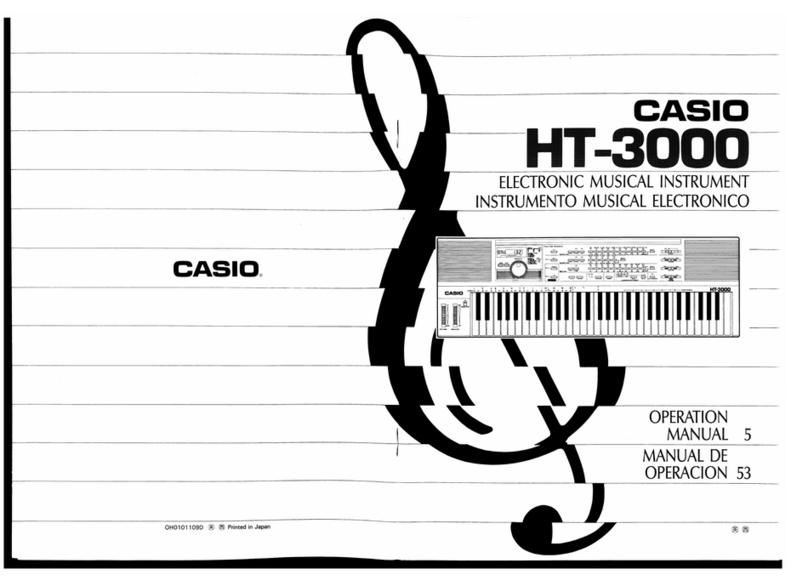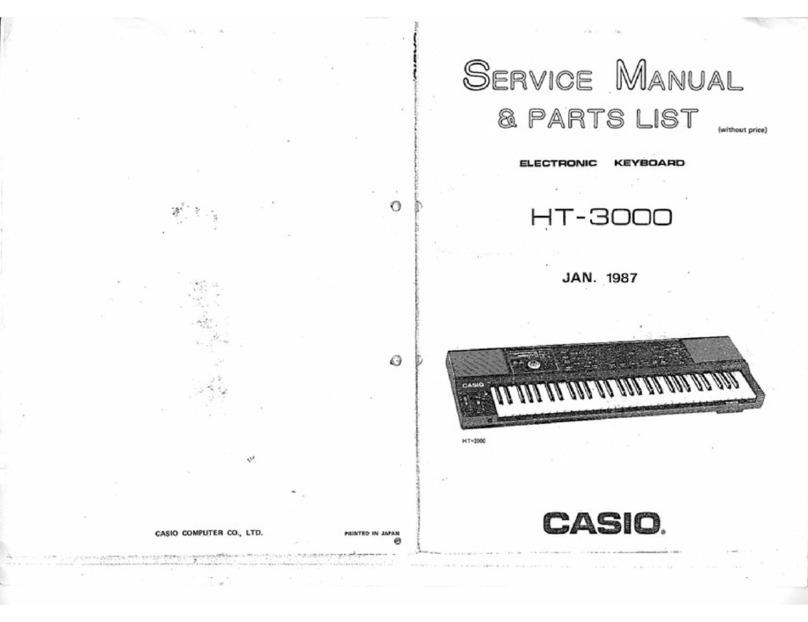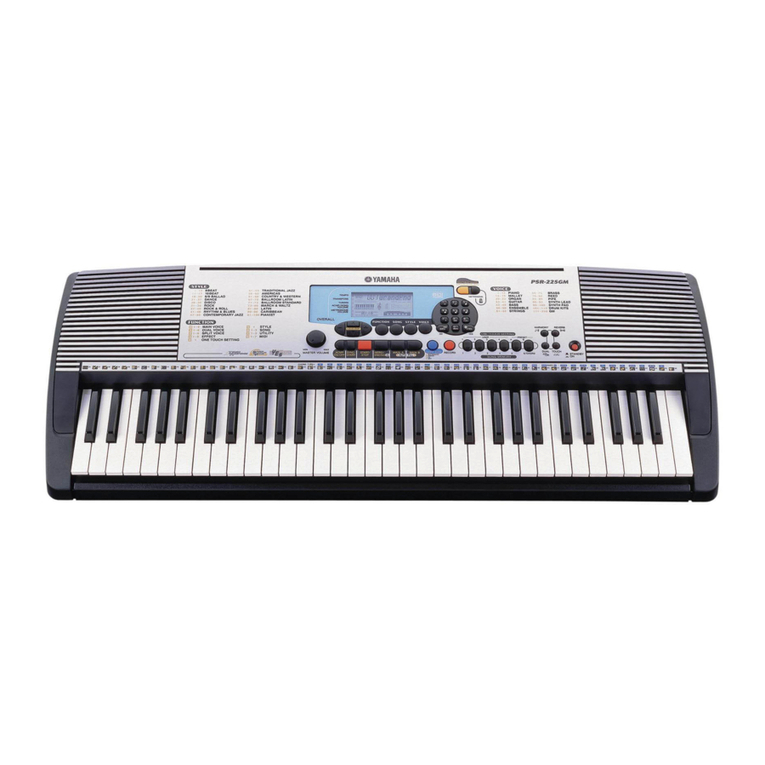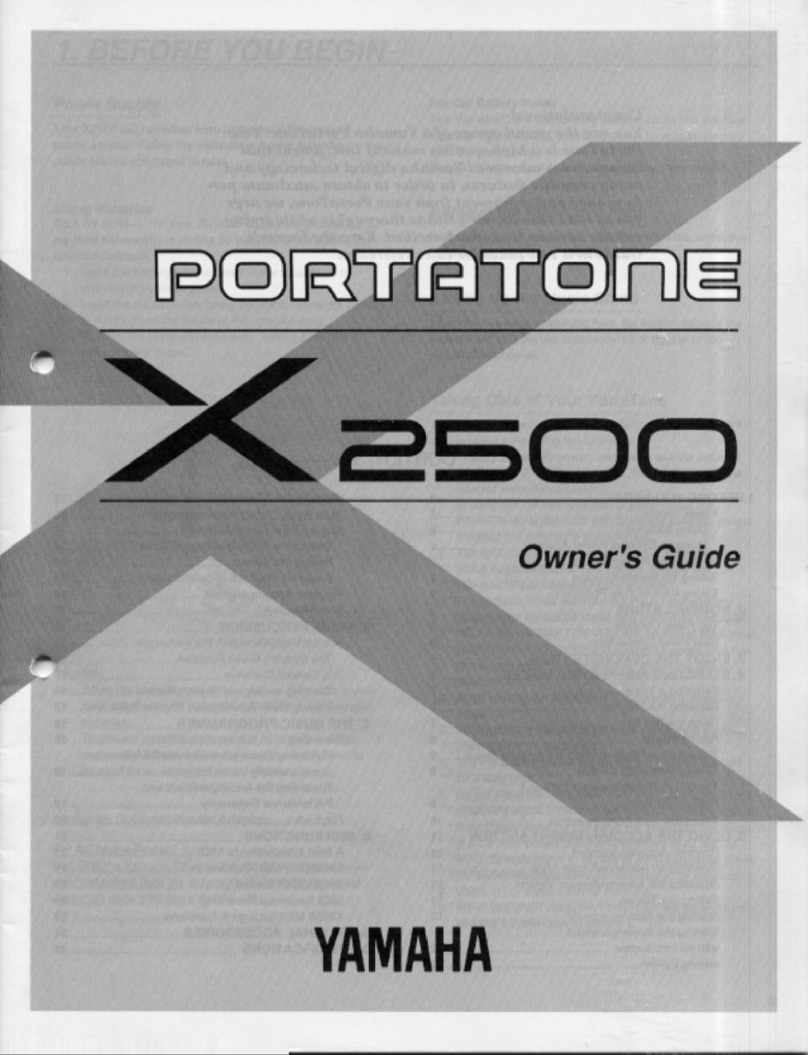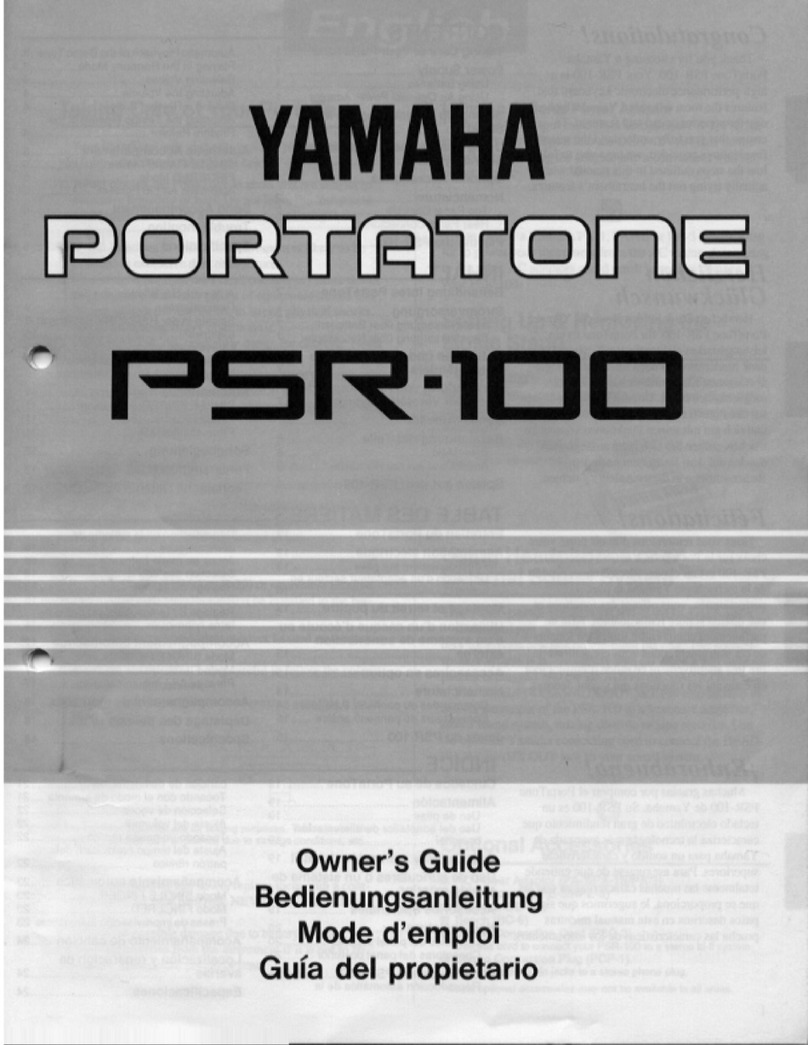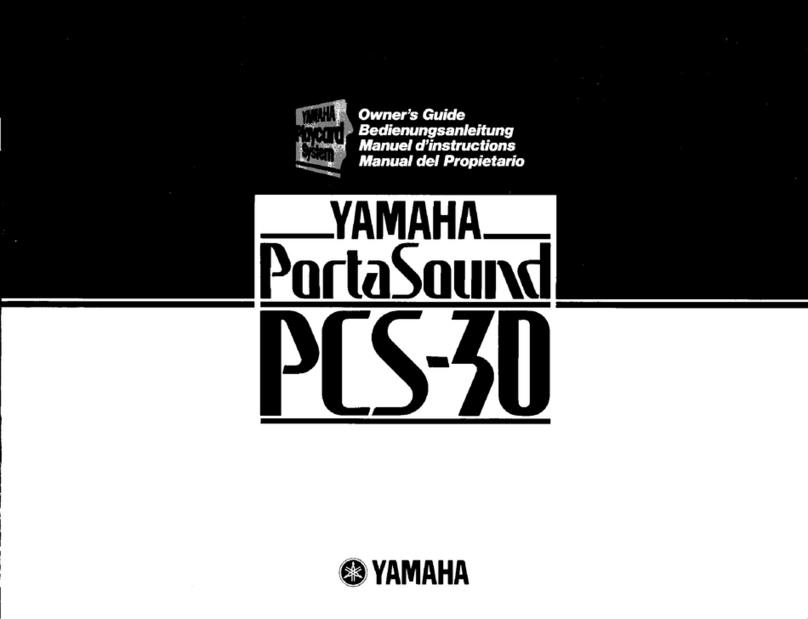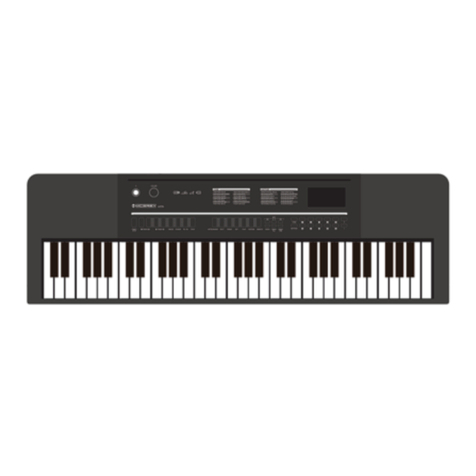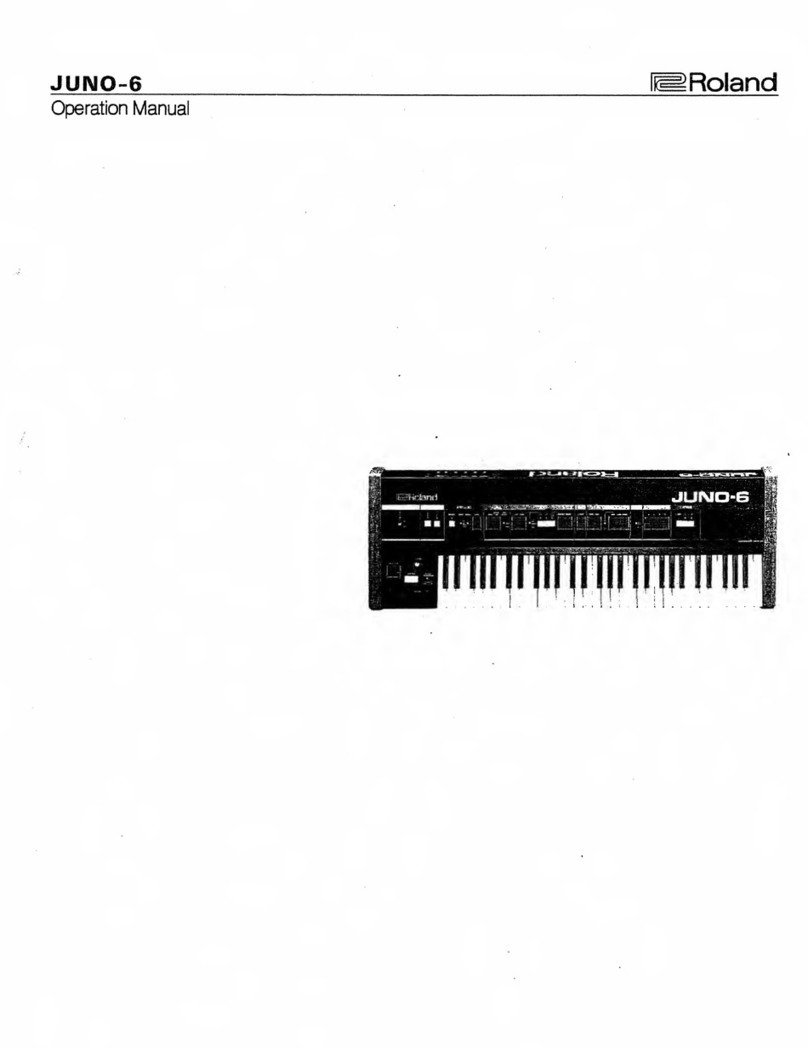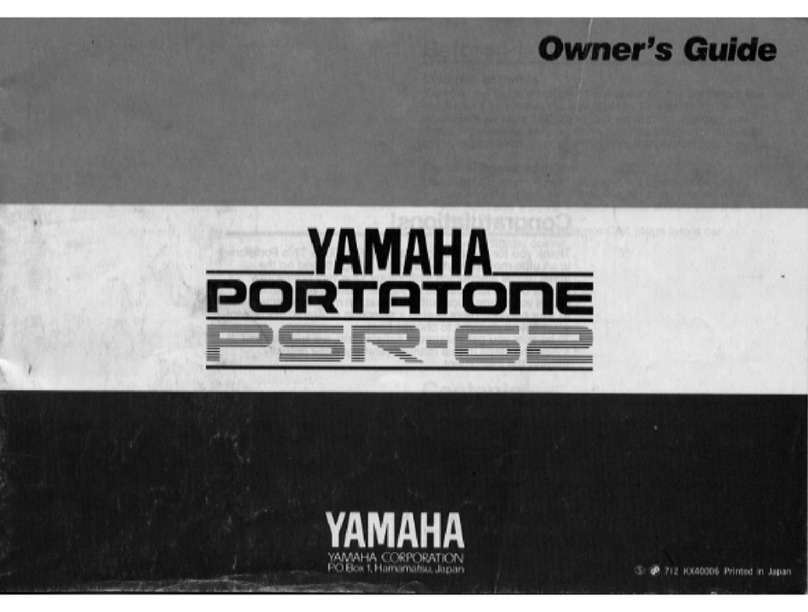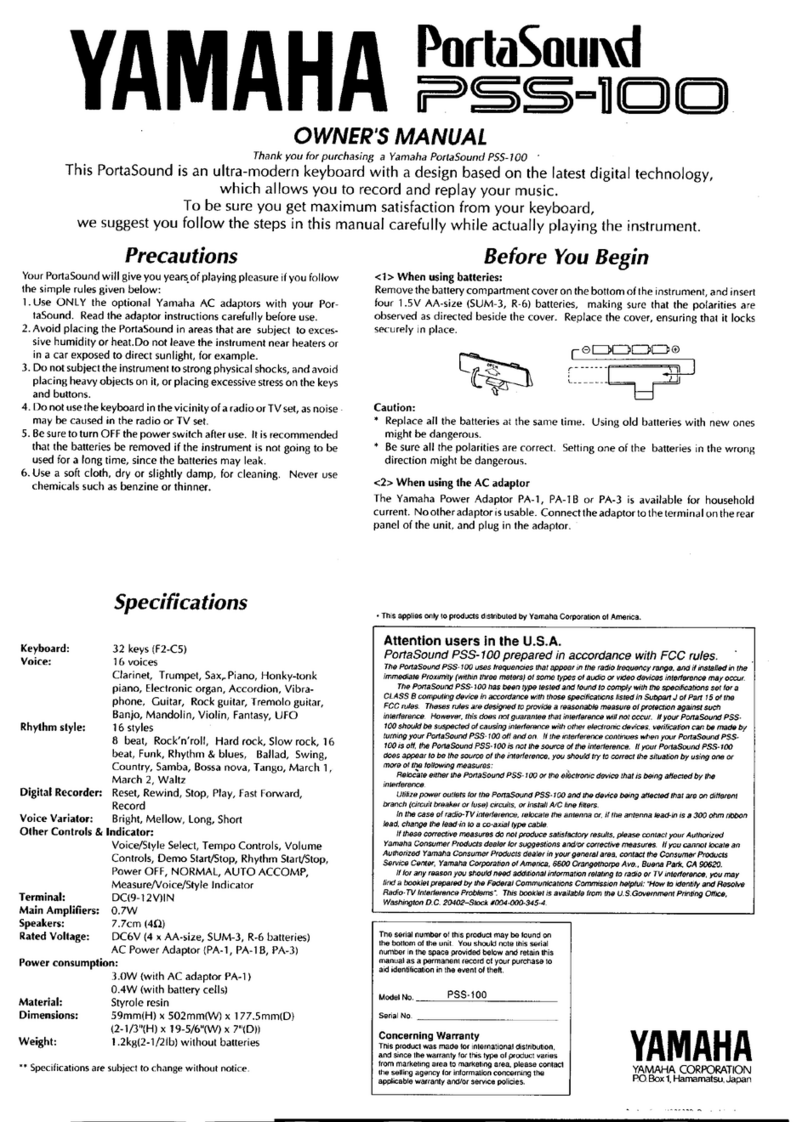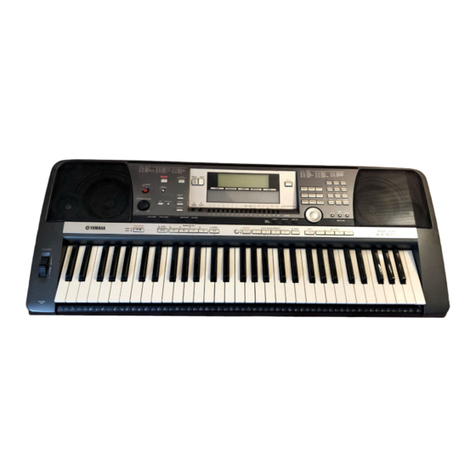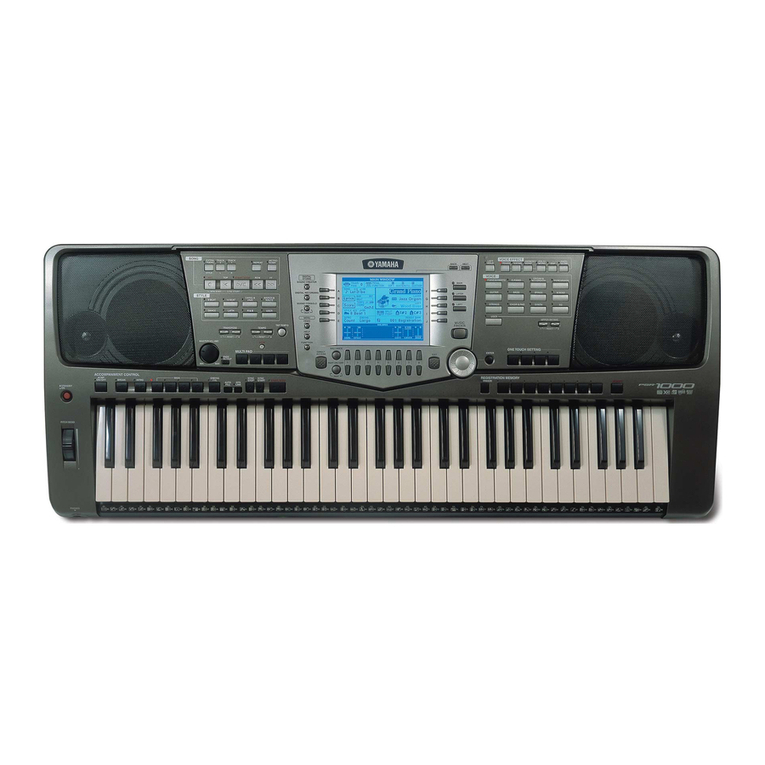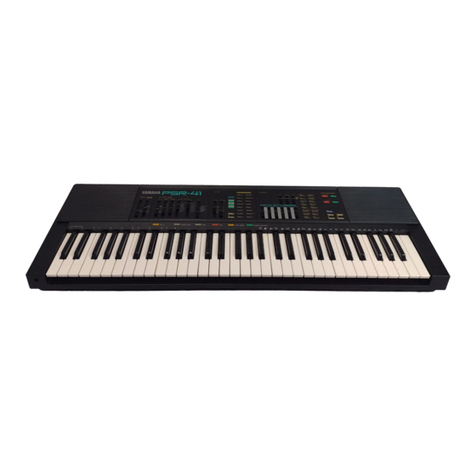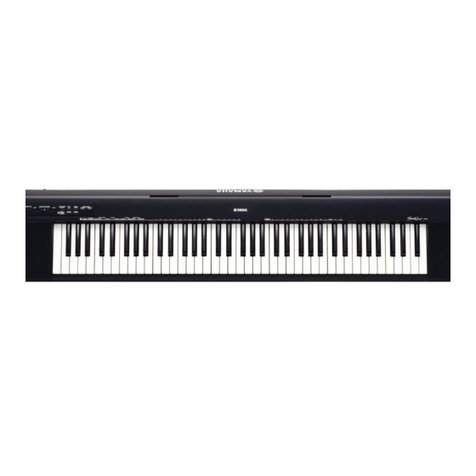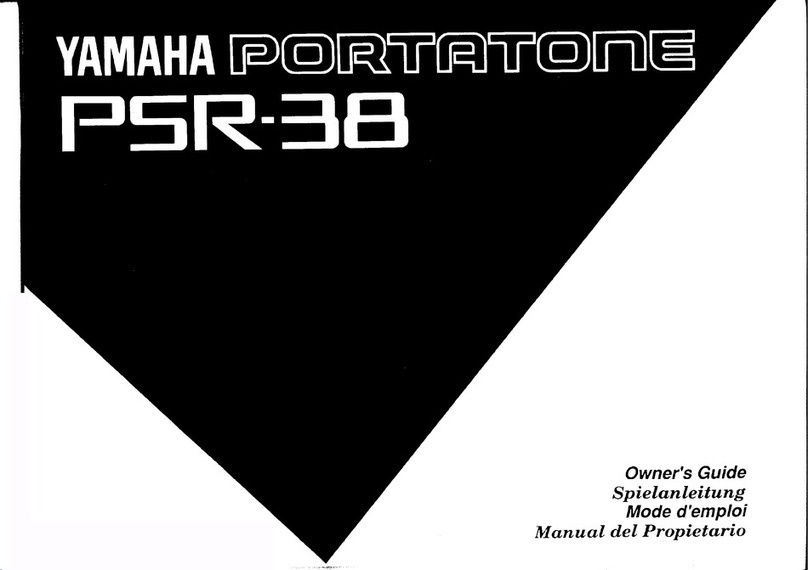
— 1 —
SPECIFICATIONS
GENERAL
Keyboard: 61 standard-size keys, 5 octaves (with touch response on/off)
Tones: 255 (118 panel tones + 128 General MIDI tones + 9 drum sets); with layer
and split
Rhythm Instrument Tones: 61
Polyphony: 24 notes maximum (12 for certain tones)
Auto Accompaniment
Rhythm Patterns: 120
Tempo: Variable (216 steps, = 40 to 255)
Chords: 3fingeringmethods (CASIOCHORD, FINGERED,FULL RANGECHORD)
Rhythm Controller: START/STOP, INTRO, NORMAL/NORMAL FILL-IN, VARIATION/VARIA-
TION FILL-IN, SYNCHRO/ENDING
Accomp Volume: 0 to 127 (128 steps)
One Touch Presets: Recalls settings for tone, tempo, layer, split, and accompaniment volume
in accordance with rhythm.
<Advanced 3-Step Lesson System>
3-step Lesson: 3 lessons (Step 1, 2, 3)
Playback: Repeat play of a single tune
Evaluation Mode: Scoring 1, Scoring 2, Phrase Practice
Voice Fingering Guide: On/Off
Song Bank, Piano Bank
Number of Tunes: 100 (Song Bank/Sing Along: 50, Piano Bank: 50)
Controllers: PLAY/STOP, PAUSE, FF, REW, LEFT/RIGHT
Musical Information Function: Tone, Auto Accompaniment, Song Bank, Piano Bank, Sing Along numbers
and names; staff notation, tempo, metronome, measure and beat number,
step lesson display, chord name, fingering, pedal operation, Keyboard,
Song Bank icon, Piano Bank icon, Sing Along icon, Voice Fingering Guide,
Evaluation Mode
Sing Along Mode
Number of Tunes: Song Bank/Sing Along: 50
Controllers: PLAY/STOP, KEY CONTROL (25 steps, –12 semitones to +12 semitones)
Metronome: On/Off
Beat Specification: 1 to 6
Song Memory
Songs: 2
Recording Tracks: 2
Recording Method: Real-time
Memory Capacity: Approximately 5,100 notes (total for two songs)
MIDI: 16 multi-timbre receive, GM Level 1 standard
CONTENTS Page
Specifications ............................................................................................................................................ 1
Block Diagram........................................................................................................................................... 3
Circuit Description ..................................................................................................................................... 4
Adjustment ................................................................................................................................................ 5
Printed Circuit Boards ............................................................................................................................... 6
Disassemble/Assemble............................................................................................................................. 8
Diagnostic program ................................................................................................................................. 14
Schematic Diagrams ............................................................................................................................... 17
Exploded View ........................................................................................................................................ 22
Parts List ................................................................................................................................................. 23

